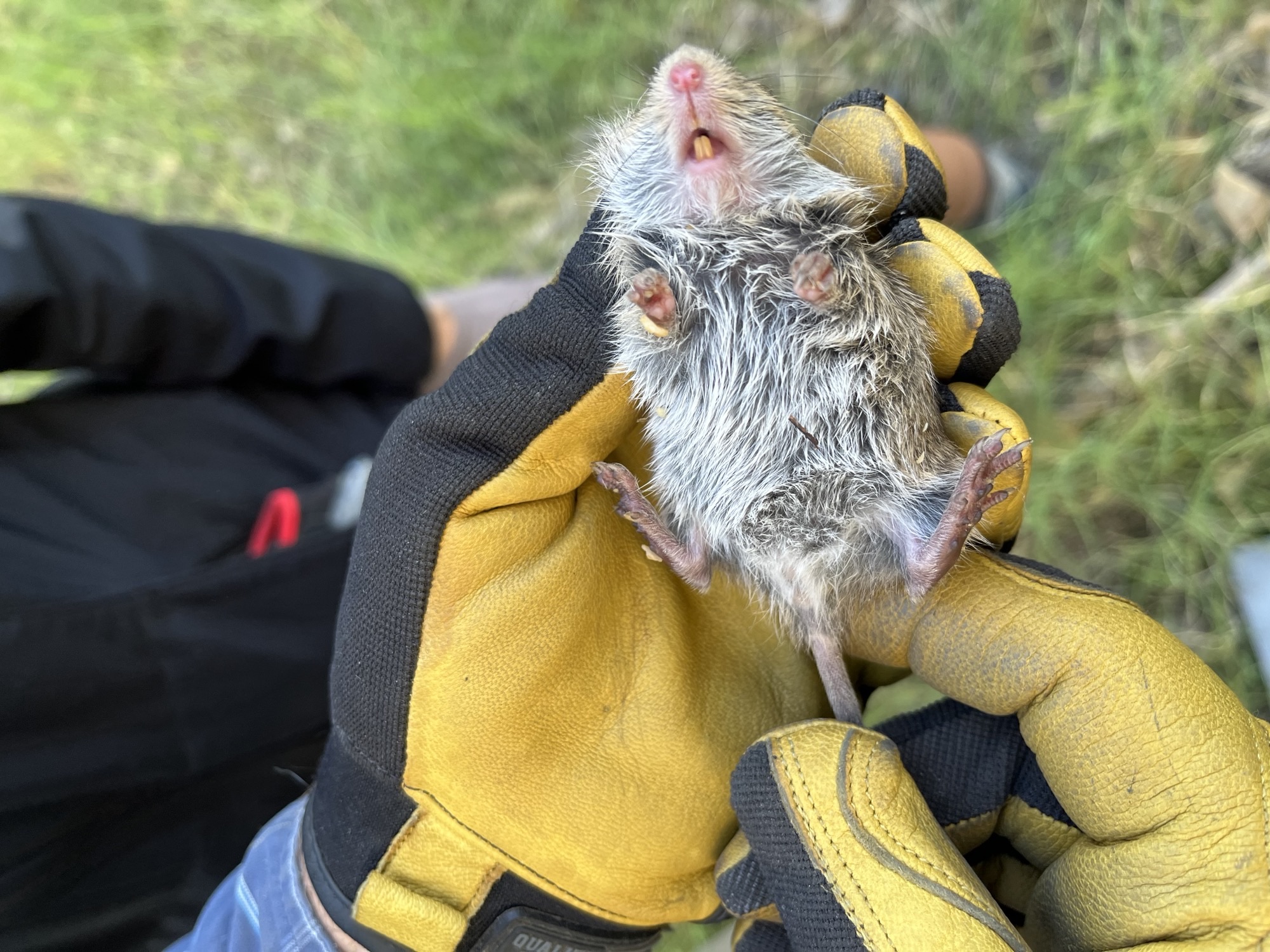Counting rats can lead to surprises
 Bureau of Reclamation biologists examine a Colorado River cotton rat before releasing it back into the Cibola Valley Conservation Area. 📸 / Kimber Godfrey
Bureau of Reclamation biologists examine a Colorado River cotton rat before releasing it back into the Cibola Valley Conservation Area. 📸 / Kimber Godfrey
Chris Dodge, a veteran biologist working for the Bureau of Reclamation, was caught by surprise more than once while conducting recent surveys of rare mammals on the lower Colorado River.
Dodge has worked for the Lower Colorado River Multi-Species Conservation Program for 22 years. The program, which includes federal, state and non-government organizations, is administered by Reclamation. The program is responsible for creating and monitoring habitats in 19 conservation areas along the Colorado River. These efforts ensure the program’s partners are following the Endangered Species Act in the river’s watershed in Arizona, California and Nevada.
Dodge and a group of coworkers live trapped Colorado River cotton rats, Yuma hispid cotton rats and desert pocket mice, three of the program’s 27 covered species. Over six days, in November and February, they set traps in the Cibola Valley Conservation Area, Laguna Division Conservation Area and Yuma East Wetlands.
“At Laguna Division Conservation Area, we captured a Rio Grande Leopard Frog in one of the traps,” Dodge said. “This is the first time we’ve caught this species, so I was reminded that animals don’t always do what you expect them to.”
Every sighting of a species using a conservation area gives the program insights into the conditions they could replicate in the future to benefit that species.
Capturing several cotton rats in areas he initially thought would produce marginal results was another surprise, Dodge said.
“I was not expecting to capture any Sigmodons (cotton rats) given the habitat conditions,” Dodge explained. “We only saw the grass they prefer in small, scattered patches and it was very dry. It reinforced my belief that you need to do this work with as few preconceptions as possible.”
Why is counting rats important? Knowing what and how many species are thriving in a created habitat tells biologists how healthy it is.
“We monitor the habitat we create to evaluate how effective it is and how it changes as it matures,” said Dodge. “This helps us understand what we need to do to create healthy habitats over the 50-year term of the program.”
In all, the survey team captured five Colorado River cotton rats in the Cibola Valley Conservation Area, a Yuma hispid cotton rat in the Yuma East Wetlands, and eight desert pocket mice and one Yuma hispid cotton rat in the Laguna Division Conservation Area. Survey results are shared with the program’s adaptive management group, which makes recommendations to the program manager on what changes, if any, should be made to the habitat it manages. They are also published on the program’s website at www.lcrmscp.gov.

